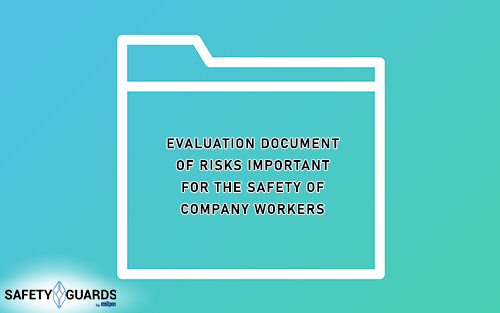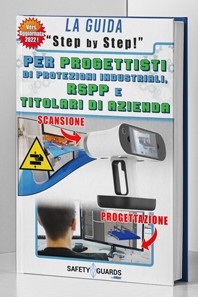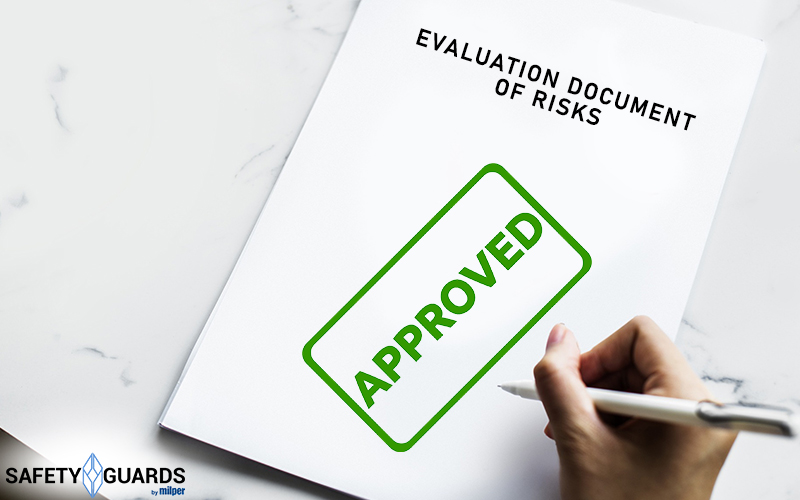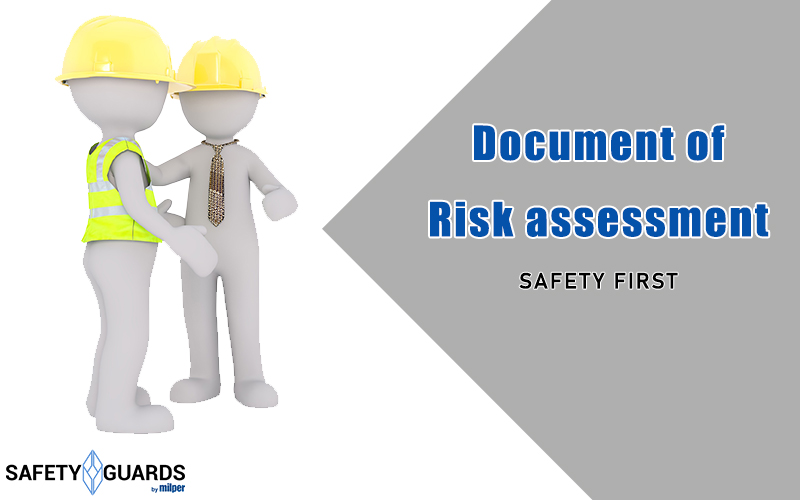THE DVR MUST BE ATTENDED
INDEX
1. DVR WHAT IT IS
2. WHO REFRAMES THE DVR
3. SUMMARY ON DVR
DVR WHAT IT IS
The DVR forms the basis of Corporate Risk Prevention strategies. The acronym indicates the short form of the Risk Assessment Document. As per Legislative Decree 81 of 2008, this is to be framed as a Risk Assessment plan, in the professional activity and related prevention measures. Exactly described on the Occupational Safety Consolidation Act, the drafting of the act, falls under the sphere of obligation if the company has at least one employee.
The assessment needs precise framing; the concept does not have a static declarative value, but is aimed at identifying, assessing and documenting risks, with the dynamic purpose of indicating and implementing precautions, in order to protect the health of the operator and General Safety in the production unit.
For example, if we are talking about an industrial production setting, the DVR must consider mechanical, physical, chemical and biological sources of risk. The same document should then state the measures to be taken, such as personal protective aids, barrier purpose systems, biological and chemical risk prevention plans.
As much as the relevant document (DVR) is considered the starting point of the Risk Assessment and Prevention activity, in practice its preparation is the closing element of the prevention circle. Processing and drafting, are in fact the acts at the conclusion of the process of analysis and preparation of Risk Prevention measures, in this case.
The structure of the act is well specified, the elements necessary in order to ensure its completeness, include:
- Detailed Occupational Safety and Health Risk Assessment Report. It is imperative that this be complemented by the Corporate Risk Assessment criteria.
- Detail the measures taken for Risk Prevention, this must include the type of Accident Prevention/Individual Protection and Safety procedures.
- Planning over time of interventions aimed at Prevention.
- Definition of procedures for implementing Prevention measures.
- Indication of Roles Responsible for the execution of the material of preventive measures, these figures must ensure a competence profile appropriate to the assigned responsibility.
- Indication of the names of the following corporate safety actors, the Prevention Service Manager, the Medical Officer in charge of Risk Assessment and the Workers’ Safety Representative.
- Identification of operational areas, in which specific operator training is required.
Given the summary content of the document, it is good to describe more specifically its structure by essential components. Drawing up documentation that is complete in wording, could in fact, result in the risk of heavy penalties for the person responsible for the evaluation itself. The DVR should therefore bear the data discussed below.
As for the company identification parameters, it is necessary that they be included specifically:
- Business name.
- Address of locations and related business contacts.
- ATECO code and type of activity.
- Number of employees.
- Master data of the Employer and its delegates for the purpose of Occupational Safety.
- Floor plan of the rooms, with relative location of machinery and equipment.
Therefore, it is necessary to provide the organization chart complete with pool master data, related to the Hazard Prevention and Protection Service. In this case it will be necessary to indicate the details of:
- RSPP (Prevention and Protection Service Manager).
- Physician-in-Charge.
- Emergency management officers.
- Workers’ Safety Representative (RLS).
The report should include a detailed description of:
- Workplaces, both within the company premises and in related appurtenances accessible to the worker.
- Production processes, with job specification.
- Processing steps, this part should include the list of facilities, equipment and chemicals used.
- Tasks with related list of workers assigned to them and their risk.
- Risk assessment criteria used in the evaluation of the specific case of the production unit.
Following the Risk Assessment, the DVR must include data on the risk analysis. This involves the addition of inspections related to production sites and machinery and related health surveillance. Data on mandatory worker information, training and education should not be overlooked. The plan of planned interventions to consolidate the Security chapter is also important.


WHO SIGNS THE DVR
As well explained by the relevant legislation, the figures involved in the preparation of the DVR include, the Employer, the Medical Officer and the Prevention and Protection Service Manager (RSPP). Consultation and approval by the Workers’ Safety Representative (RLS) is required. The act will bear the signatures of all figures involved. However, there is a substantial difference regarding the different degree of responsibility attributed to each.
In order to clear up any possible doubts and get to the bottom of the underlying concept, a remark on the definition of “date certain” signature is necessary. Considering Paragraph 2, Article 28 of Leg. 81/08, the report must be accompanied by a valid date, for the purposes of the effective date of the Risk Assessment Document (DVR) itself.
The act can be filed either in the computer medium or in paper form. What confers validity is the signature not only by the Employer but also by the other figures involved. The Employer signs as the responsible person, the other stakeholders, however, have the function of signing the DVR for acknowledgement and certification of the effective date.
Having established who prepares the Risk Assessment Document (DVR), who signs it and in what capacity, the legislature clearly establishes responsibility on the part of the Employer. Significant penalties are commiated by law. An Employer who fails to prepare a Risk Assessment Document (DVR) may be sentenced to imprisonment for a period ranging from three months, or a fine ranging from 2,740 to 7,014 euros.
On the other hand, signing an omissive or incomplete act is punishable by a fine, ranging from 1,096 to 4,384 euros. Given the fundamental importance of Safety Protection in terms of Risk Assessment in the workplace, irregularities related to the preparation of the DVR may be associated with business suspension measures by the Supervisory Bodies, which are precisely responsible for the supervisory function.
The Employer is also responsible for failure to update the Risk Assessment Document (DVR) as a result of changes in the organization within business units and appurtenances, production processes, and updating of related risk prevention procedures. Failure to consult the Workers’ Safety Representative (RLS) is also punishable.
Having clarified the importance and responsibility related to the proper drafting of the Risk Assessment Document (DVR), it is good to consider that the Risk Assessment, drafting and signing of the act, must meet very specific deadlines. The entrepreneur about to start a new business is required to carry out a Risk Assessment related to production processes, even before the start of the production cycle.
For obvious organizational reasons and related to the entry into full operation of the new enterprise, the law provides a deadline of ninety days for the signing of the Document (DVR). If, on the other hand, the company-already established and not subject to the requirement to sign the Risk Assessment Document-hires an employee, the requirement to sign the document is immediate. On the other hand, the DVR needs to be updated within 30 days in case of changes in organizational conditions and production processes, in cases of accidents occurred/avoided, or in cases of additional needs revealed by health and technical surveillance checks.
Thus, the documentation has the function of accurately framing the organizational condition of the company and analyzing the occupational risk-related component. Such compliance is to be regarded as a snapshot, the validity of which continues as long as the conditions analyzed persist. The Risk Assessment Document (DVR), therefore, is not bound to precise deadlines. However, it is good to consider the particular case, as the principle is not always applicable in the same way.
In the event that a company equips itself with, for example, Sound Absorbing Cabin systems to control noise emissions, the Noise-Related Risk Assessment, should be carried out every four years. However, it must be clarified that the standardized type of Risk Assessment Documents (DVR), in fact represents the simplified version and dedicated to companies with up to ten employees and no high-impact risks.

SUMMARY ON DVR
Risk is a concept that adheres to the logic of the probability that an actual event may occur in the concrete. It is possible to quantify the risk component by exact models. Applying the principle of carrying out professional activity, Risk Assessment, takes on the weight of a measure that analyzes the sources of danger and takes action to reduce the probability that harm will be originated.
Viewed in this light, the Risk Assessment Document (DVR), takes its value of a long-standing duty to acquire the active role of a tool in the service of the smooth operation of business activities. The Occupational Safety Consolidation Act speaks clearly, the signing of the Risk Assessment Document, is not optional but part of the obligation on the part of the Employer, if the company has even one employee in its employ.
Therefore, it is necessary to define the type of contract that frames the worker. The technical standard makes it clear, a worker is defined as a person who performs work, at an organization in a manner independent of the type of contract in place. Therefore, the figure of the trainee or student of a training institution who, although not receiving any salary for the activity performed is exposed to risk in the course of his or her training activity is also included.
The Risk Assessment Document (DVR), should therefore include in the assessment every nature of risk, whether mechanical, physical, chemical or biological. Risk Assessment also requires the definition of prevention measures implemented through procedures, action plans, Accident Protection systems and personal protective equipment used.
The Document (DVR), therefore, is not to be considered as a formal act, but rather implies compliance with a precise protocol for the assessment and preparation of the relevant prevention measures. In order for the statement to be correct, it is necessary for it to consider several essential aspects.
It is necessary for the Risk Assessment to be inclusive of the evaluation criteria adopted. Each source of risk must be accompanied by the relevant prevention measures and the timetable for protection and prevention measures. Procedures for the implementation of the interventions with how they are to be carried out should be indicated. There is a requirement to designate those responsible for Safety Coordination for ordinary and special events.
It is also necessary to indicate the highest-risk areas of operation and the minimum level of competence to access their performance. Key actors are the Employer, the Prevention and Protection Service Manager (RSPP), the Medical Officer and the Workers’ Safety Representative (RLS). These figures are directly and indirectly involved in drafting, approving and signing the Risk Assessment Document (DVR).
It should be made clear, however, that while the Employer assumes legal responsibility for the declaration, the other figures intervene-each to the extent of his or her own expertise-in the drafting, approval and validation of the date of the act. In this regard, the concept of “date certain” is important.
In fact, the legislature has set very specific deadlines for the performance of the act. If a period of ninety days of the start of operations is available for the new company, any changes during the course of operations will result in an update of the Risk Assessment Document (DVR) within thirty days. If an employee is hired instead, the obligation to change the DVR, takes immediate effect.
It is good to detail the professionalism involved in drafting the statement. Starting from the head of the production line, down to the managers of the Technical Department, everyone lends their expertise in order to provide the necessary data for a Risk Assessment that adheres to the actual conditions of risk in each production unit.
Finally, it is a “snapshot” reporting the situation at the time. From this it is a consequence to deduce that the introduction of more efficient systems for accident protection, whether it is Soundproof Cabins or Machinery Accident Protection, must be the subject of updating the Risk Assessment Document (DVR).


